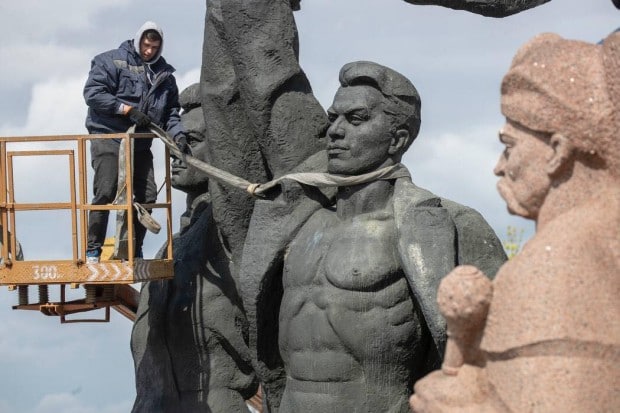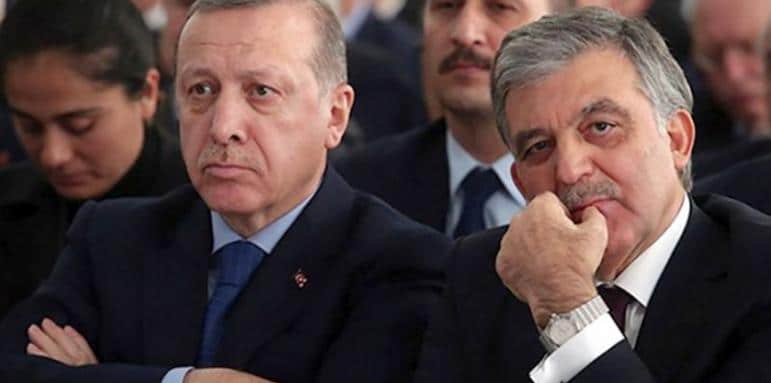Man’s eating habits can show luxury, extravagance or, conversely, simplicity and modesty, as well as surprise and even terrify, writes the Egyptian “NoonPost”. In an article, he reveals the dietary preferences of the world’s most famous leaders. As people’s taste preferences and eating habits differ, we all have our favorite foods. This also applies to the leaders of the states. Their eating behavior can show luxury, extravagance or, conversely, simplicity and modesty, as well as surprise and even terrify. Historical novels inform us a lot about the taste preferences of the palace aristocracy – they are full of descriptions of lavish feasts with chants and music and a wide variety of dishes. The interest in the study of food and literature on it in ancient societies gives a new perspective on history, can give us a clear idea of these eras from a social and cultural point of view. With the development of civilization and the social and cultural revival, the tastes and preferences of kings and sultans changed, and public feasts became available to a small circle of people who observed hygiene and etiquette. In addition, leaders have become more cautious than ever for fear of poisoning or disease. The meals of modern heads of state are sometimes top secret for reasons of national security.
From beef head, preferred by Jacques Chirac, to Vladimir Putin’s favorite pistachio ice cream – food remains an extremely sensitive topic in power circles. So when asked by Angela Merkel’s chef about her favorite recipes, he replied: “I can’t tell you what her preferences are, otherwise these dishes would be cooked all over the world.” Gilles Bragard, president and founder of the French Club of Chiefs chefs, commenting on the preferences of French leaders: “Food is a very sensitive issue in power.”
French presidents
Charles de Gaulle preferred peas, which speaks to the strict nature of the military leader, who does not spend much time at the table.
As for Francois Mitterrand, his eating habits are mixed. The socialist president loved caviar, a bourgeois delicacy that contradicted the ideology he was publicly promoting.
Jacques Chirac is known as a hospitable host who presents his favorite dishes to his guests. He likes Asian cuisine and non-traditional dishes like beef head.
The French are aware that former President Francois Hollande does not like artichokes and asparagus: they well remember the diplomatic blunder of May 2012, when he was served asparagus during a visit to Angela Merkel during the French president’s first visit to Berlin.
As for former President Nicolas Sarkozy, Bernard Vaucon, who has run the Elysee Palace kitchen for nearly 40 years, said: “The president hated artichokes and loved chocolate mousse, and he was also known for not liking wine and cheese and was addicted to chocolate. ” Sarkozy also preferred plain salads, white meat and, of course, the pasta of his Italian wife Carla Bruni.
The leaders of America
In 1990, Republican George W. Bush banned the consumption of broccoli at lunch at the White House, Air Force One and Air Force barracks, and was remembered for saying, “I don’t like broccoli; I never liked this vegetable. When I was little “My mother fed me with it. I am now the President of the United States and I will not eat broccoli anymore!” This scandalous incident, called BROCOLIGATE, prompted farmers to send 10 tonnes of green vegetables to the White House in protest.
Unlike Michelle Obama, who calls for the fight against obesity and encourages the eating of fruits and vegetables, Barack Obama appears in photos and videos as a regular visitor to fast food restaurants and is known for his love of Mexican chili con carne. .
Russia and Putin
Known for his fear of poisoning, Putin has hired a full-time man to try all the dishes prepared for him. With his penchant for pistachio ice cream, despite low temperatures in Russia, Vladimir Putin remains one of the most conservative presidents when it comes to food, and the details of his food rarely get publicity. In 2012, however, he appeared on NTV and revealed what he usually eats for breakfast. He usually eats oatmeal and cottage cheese with honey, raw quail eggs and a cocktail of beet and radish juice. In an interview with the TV channel, Putin said: “I don’t have much time to eat, I like tomatoes, cucumbers and salads. In the morning I eat oatmeal and cottage cheese with honey, and if I can choose between meat and fish, I prefer fish. I also like mutton.”
The British Queen
Queen Elizabeth II begins her day with a cup of green tea from her favorite brand, Twinnings, the world-famous English tea company, Kellogg’s Special K cereal with fruit and sometimes an omelet with smoked salmon. For lunch, he prefers Dubonnet wine, fish with spinach and zucchini or grilled chicken and avoids carbohydrates. The British Queen’s dinner is like lunch – just cooked meat and vegetables. If he wishes, he can ask for venison to be served, and for dessert – chocolate, strawberry or peach pudding.
Germany:
The Führer and Merkel Who would have believed that Adolf Hitler, who was close to conquering the world, did not eat meat and was a vegetarian? Hitler’s last meal was an accurate indication of his taste preferences. On April 30, 1945, a 25-year-old girl arrived at Hitler’s bunker, where she was asked to prepare his last meal – scrambled eggs with mashed potatoes. As Victoria Clark and Melissa Scott recount in their book Dictators’ Evenings, Hitler was more animal-friendly than human, but he was not a devout vegetarian. For example, there is much documentary evidence that he also preferred a dish called “poultry meat in Hamburg” – pigeons stuffed with liver, tongue and pistachios. The Nazi leader’s love for poultry was documented by a chef named Diona Lucas, who worked at a hotel in Hamburg in the early 1930s.
As for former German Chancellor Angela Merkel, she does not like to talk about her personal life, but with the election approaching, she did not bother to open the doors of her home to the media, usually appearing in front of the camera in the kitchen. According to her, she loves baked goods, potato soup and cabbage. In addition, the former German chancellor is famous for his love of sirens.
Fidel Castro and pasta
Cuban leader Fidel Castro is interested in cooking and his friend, Colombian writer Gabriel Garcia Marquez, describes him as “a tireless fisherman looking for new recipes and cooking with the diligence of a scientist”. He is known for his passion for reading cookbooks, collecting recipes and cooking so that his loved ones can taste the delicious dishes. According to his relatives, he loved making pasta and read more than 200 pages of newspapers during breakfast.
Saddam Hussein and Masguf
Saddam Hussein led Iraq between 1979 and 2003. He loved fresh, lean meat, as well as fresh shrimp and olives brought directly from the Golan Heights, and his favorite dish was masguf – he could eat it at any time. time of day. He also preferred the freshest fish possible, so he could wake the kitchen staff at 5:00 or 6:00 in the morning to prepare the fish he had caught. Among the Iraqi president’s other favorite dishes were mostly local dishes such as okra broth, lentil soup and fish soup, common in the Tikrit region where he was born and raised.
Camille for Gaddafi
The late Libyan colonel Muammar Gaddafi is known for his love of camel’s milk. Although he suffered from indigestion and stomach aches, he did not stop drinking it. His love for the drink was so strong that he insisted on offering camel’s milk to his guests. It is known that former British Prime Minister Tony Blair refused him during his visit to Tripoli on the advice of his advisers. Gaddafi loved to eat fish, especially Libyan, as well as some popular dishes such as couscous with camel meat and pastries – especially Italian.
Kim Jong Il
The leader of North Korea (1994-2011) is known for his taste preferences. His favorite dishes include shark fin soup and dog meat, and his rice was made by a group of women who chose rice grains of the same shape, color and length and cooked them on fire from trees cut down from a mountain peak near border with China. He loved sushi and was known to adore fresh fish so much that he began eating it while she was still alive. While his food was grown solely for him, the North Koreans starved.
Joseph Stalin
Considered the second leader of the Soviet Union, he is known for his cruelty and strength, the transformation of the agricultural country into an industrial society and his victory over the Axis powers during World War II. Among his favorite dishes was a traditional Georgian dessert of nuts and caramel soaked in honey. Stalin’s festivities often lasted about 6 hours, and Georgian dishes and products such as walnuts, garlic, peaches and pomegranates were often present at the table.
Benito Mussolini
Benito Mussolini is the leader of the Italian state and one of the founders of the fascist movement, and his hatred of France goes beyond politics. He once said, “French cuisine is useless, and Italian cuisine is the best in the world.” He loved to eat at home with his wife Raquel and his children at certain times, and preferred to have all his family members at the table when he returned home. The favorite dish of the Italian leader is a simple salad with minced raw garlic, butter and lemon. Apparently his diet later changed when, in 1945, he was diagnosed with an enlarged liver, high blood sugar, and colon disease. For this reason, he includes rabbit and chicken in his diet.













